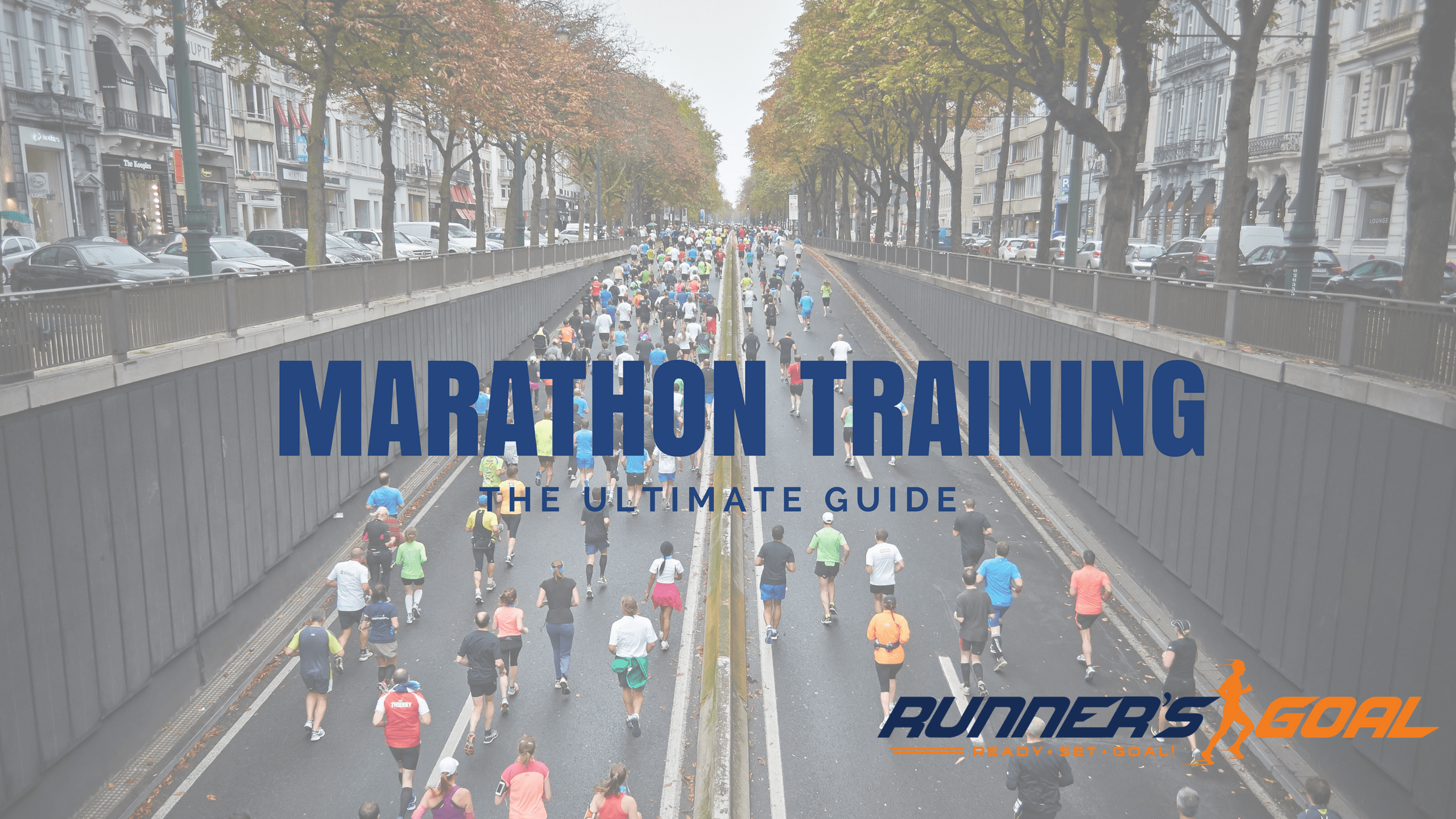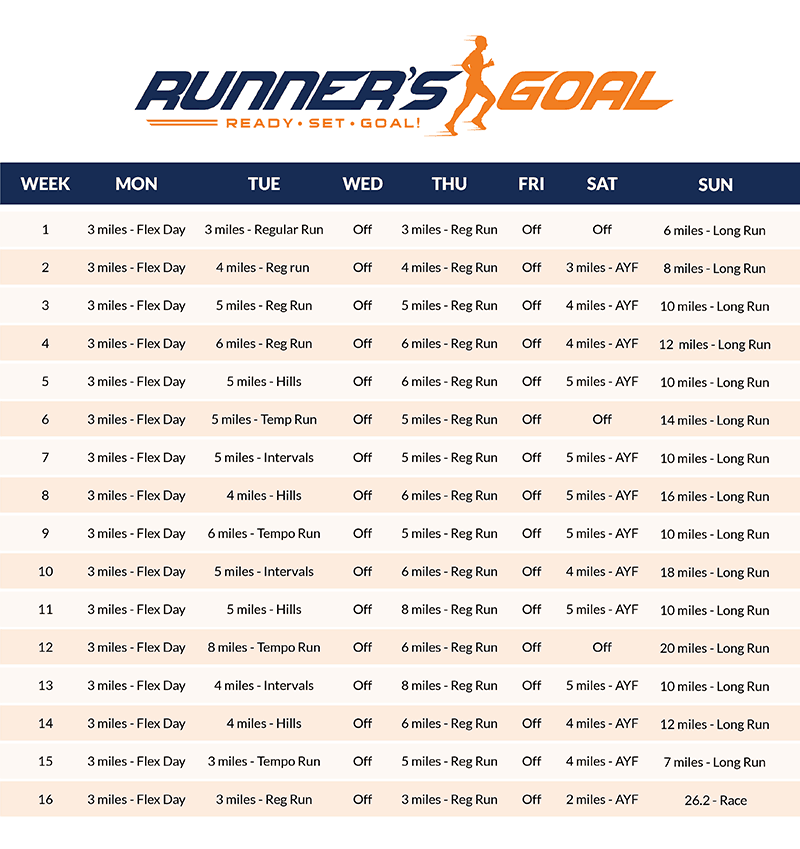Running a marathon is the ultimate testament as to how physically tough you are. When you toe the start line, no one can do the work for you—you’re going to have to tough out every single mile. There are no shortcuts—it’s just you, your training, and your heart.
If you manage to finish a marathon, you’ll be part of an elite group. In the United States, only 0.5 % of all residents have run a marathon.
And, in order to get that far, you’ll have to put in the sweat equity. Count on running a minimum of three days a week, and possibly as many as six times. You’ll also want to work in some other forms of exercise to take your training to the next level.
How to Begin Your Training
The only way to get ready for running a marathon is to dive right in. Lace up your shoes and get out there.
If you’re a seasoned runner who has competed in many shorter races, or even a half marathon, you’ll know how much discipline you’ll need when training for a marathon. If you aren’t as experienced with running, you’ll quickly learn that marathon training is like a part-time job.
Everything you’re doing may seem excessive at times, but it’s all necessary. If you don’t put in all the required work, one of two things will happen:
- You won’t be ready for race day: Taking shortcuts in your training will sabotage your overall plan. You’ll realize that on race day when you’re midway through the run and find you can’t continue. You don’t want to pay the sign-up fee and put in a lot of work only to fail.
- You won’t make it to race day: Running is a sport that has a high number of injuries. Even seasoned, experienced runners get injuries. They can happen to any runner at any time. The best way to protect yourself from injury is to train properly.
Race Day Nutrition
No marathon training plan or article would be complete without a section on nutrition. To make the most of your marathon experience and log your best finish time possible, you need to think about nutrition both on race day and in the months spent in training.
What you should be eating while training for a marathon will vary according to the people you ask. While runners famously ingest a lot of carbs prior to race day, protein is equally important.
With all the confusing and sometimes conflicting advice out there, try to keep one rule in mind while grocery shopping—lean toward naturally healthy foods. Staying away from highly processed foods is always a good plan.
Here are some of the foods you’ll want to throw in your grocery cart.
Think Plant-Based Foods
You don’t have to eat like a rabbit while you’re training, but you should put a strong emphasis on eating plant-based foods. Fruits and vegetables have a lot of vitamins and minerals that will keep your body in tiptop shape nutritionally.
Plus, produce contains liquids, which is great because it will help you stay hydrated if you get tired of drinking all that water.
Because they are both filling and don’t contain a lot of calories, they’ll help you manage your weight as you training. As you bump up your weekly mileage, you might find yourself hungrier than ever, and snacking on produce instead of chips is a lot better for you and your waistline.
Some of the superstar produce you should try to incorporate include bananas, blueberries, sweet potatoes, oranges, spinach, grapes, strawberries, squash, tomatoes, carrots, broccoli, and peppers.
Try to eat as wide of a variety of produce as you can and attempt to incorporate all the colors into your diet—green, purple, blue, orange, red, yellow, and white.
Tart Cherry Juice
For a runner, tart cherry juice belongs in its own category because it can be a valuable nutritional aid.
Even if you’re a seasoned runner, you’re still going to fall victim to sore legs from time to time, or it might happen after every long run or hard workout. While nothing will completely banish that feeling, tart cherry juice can take a lot of the aches and pains away.
This drink can help immensely with post-run recovery, especially when you drink it within an hour or so of a hard run.
Tart cherries have natural anti-inflammatory properties, which make them a good match for runners. While eating tart cherries whole may help some, cherry juice is a more concentrated source of the anti-inflammatory substances.
Ideally, you’ll want to drink a glass or two every day while training. And, after you cross that finish line on race day, you should drink some more as soon as possible. Just make sure to account for the extra calories in your diet.
Go Nuts About Nuts
Nuts also have anti-inflammatory powers, and they’re a good source of protein. Some of the best kinds of nuts that runners should eat include almonds, pistachios, walnuts, hazelnuts, peanuts, and pecans.

Keep in mind that nuts are pretty high in calories, so a handful at a time is an appropriate size for a snack. If you’d rather, you could spread some nut butter on an apple or banana and get a produce boost at the same time.
Fish
Fish is a great food for runners to incorporate into their diet two or three times a week. It is wonderful for your heart because of the omega-3 fatty acid it contains. Plus, it’s low in calories and it’s a good source of anti-inflammatory properties to soothe those tired running legs.
Don’t Skip the Milk
You don’t have to feel any shame when reaching for a chocolate milk after a long, hard run. It has a great mix of carbohydrates and proteins—ideally, we want a drink that falls into the range of a carbohydrate-to-protein ratio of 3 to 1 and 4 to 1.
While chocolate milk is a tasty treat, runners can also opt for white milk, yogurt, or cheese to get their daily calcium. Calcium is important for maintaining bone health, which is something all runners need to think about.
Beans
Beans are a great choice for runners because they’ll help them feel full because of the high fiber content. Beans also have carbohydrates and protein. As an added perk, they are cheap to buy, which means runners might suddenly find more disposable income in their budgets to spend on signing up for races and buying cool gear.
As wonderful as beans are though, it’s a good idea to stay away from them the day before and the day of your marathon: the fiber might initiate too many pit stops as you’re running.
Whole Grains
Whole grains can give you a steadier release of energy than refined white breads and pastas will. That’s good news during a long race like a marathon. You’ll be hitting the wall at some point anyway, so you don’t want to give your body a reason to hit it earlier than it normally would.
Other Things You Can Do To Aid Your Recovery
Marathon training takes a lot out of you. It’s a challenge—physically, mentally, and even time-wise. You or your loved ones might feel like you’re short-changing some of the other responsibilities in your life.
While there’s no way to avoid that, you can do things to help your muscles and body recover from the strain you’re putting on them.
Get Plenty of Sleep
When training for a marathon, you might find yourself feeling more tired than usual; and, if there was ever a time to indulge yourself in a nap or two, this is it.
When you’re training for a marathon, you should opt for a minimum of eight hours of sleep a night. Sleep will restore your body, calm your mind, and keep you performing at your best.
Taking A Rest Day
The importance of taking a rest day—a day of no exercise—once a week can’t be stressed enough. It’s one of the best ways to aid in your recovery. So make sure you pencil in some downtime every week, no matter how hard it is to do so.
Stretching
Stretching is crucial for runners, but there’s a right way to stretch before workouts and after.
There are two types of stretching: dynamic and static. With dynamic stretching, you’re getting your muscles ready for a run, whereas static stretching relaxes your muscles and lets them cool down after your activity.
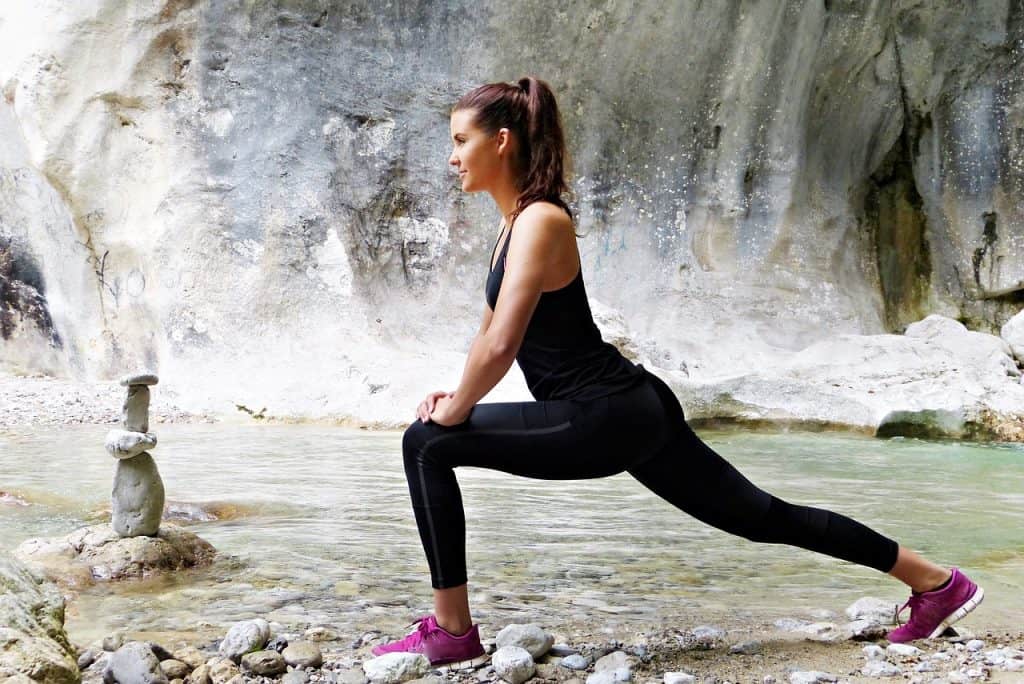
It’s important you avoid static stretches before a run because you don’t want relaxed muscles at that point. Instead, you’ll want to focus on dynamic stretches such as front and side leg swings, the lunge exchange, donkey kicks, and eagles.
After your run, you’ll want to focus on stretches that will help you work some of the tightness out of your legs. Those would include stretches like the straight leg hamstring, hip flexor, thigh, ITB, calf, and lower back stretch.
Massage
When it comes to relieving the discomfort of sore muscles, nothing beats a massage. If you can afford to spring for it, try visiting a sports massage therapist.
They’ll be able to reach deep into your tissue and muscles. It may not always feel pleasant, but it will help.
If you can’t afford a professional massage, don’t worry. You won’t have to take out a part-time job to pay for one.
Instead, try relieving some of the tension with a foam roller. If you don’t have that, you can try running a tennis ball along the length of your legs and under your feet.
Icing After Running
If you’ve been feeling sore after your longer runs, you could benefit from some ice therapy. Icing is used by a lot of runners for a good reason—it really works.
Running, especially when logging high mileage, can cause a lot of inflammation in your body. The most common spots for overuse injuries include ankles, feet, knees, and hips. Icing can reduce that inflammation and speed recovery.
If you just have one isolated spot of pain, you might be able to use an ice pack to take care of it. But if you feel the strain all over your lower half, you’d do better with an ice bath, no matter how uncomfortable it sounds.
To do it, you’ll fill your bathtub with ice to cool your water down between a range of 50 to 59 degrees Fahrenheit. Then, you’ll sit in there and soak up the icy goodness for 10 to 20 minutes. It isn’t easy, but it is effective.
Common Marathon Training Mistakes
If you’re a new runner, or even if you’ve been at it a while, you might fall victim to some common training errors that can set back your progress or even put you on the injury list.
Let’s look at some of the biggest mistakes you can make.
Overtraining
If five or six workouts a week is good for you and your marathon goals, seven must be even better, right? Wrong.
Training every single day during the week will lead to overtraining, and overtraining is bad news. You’ll feel exhausted, moody, and anxious. Your performance will suffer and you might lose your appetite and drop a few pounds.
Your muscles might feel sore and you’ll be more prone to injury while trying to train. Even your sleep can suffer, and you might even start catching more colds and minor illnesses than you usually do.

One way you can spot overtraining is by checking your resting heart rate. Become familiar with what it is normally and if you see it spiking for more than a day after a workout, you should pencil in a rest day and see if it goes back to normal.
Another way to spot overtraining is to watch your performance levels. If you’re giving your training your all and your times are not improving, or even getting worse, you might be overtraining.
If you suspect overtraining, you need to cut way back on your running or even stop altogether for a week and see if it helps. If it does, start back slowly, spacing out some rest days in between workouts.
If you still feel tired and out of it after a week, give yourself another week of rest and see how you feel then.
Bumping Up Mileage Too Quickly
Sometimes we underestimate how much time we’re going to need to properly train for a marathon. We can feel good about how our legs are feeling on a particular run and decide to push the envelope a bit.
But no matter how good your legs feel or how much you’d like to try to push a mile or two past what you’ve scheduled for your run, you have to stick to the plan you’ve developed. Make a list of which days you’ll run each week and what distance you’ll go—and adhere to it, no matter how tempted you are to do more.
When you’re planning your schedule, remember the 10 percent rule. This rule says you shouldn’t bump up your weekly mileage more than 10 percent from the week before. This principle, if followed, will prevent you from increasing your mileage too quickly and cause an overuse injury for yourself.
Overuse injuries can sideline you for weeks, and even months. Just one injury could cause you to drop out of the marathon you’re planning.
Not Scheduling Enough Weeks for Training
One common rookie mistake is thinking it won’t take as long to train for a marathon as it actually does. While you may be able to push yourself hard and shave some weeks off your training session, it opens you up wide to running injuries because you find yourself trying to cram more training into the few weeks you’ve scheduled for yourself
Even if you manage to complete the marathon on just a few weeks of training, won’t it bother you to know what you could have done if you would have trained properly and given it your all?
Forgetting to Test Drive Race Day Nutrition
You’re going to need fuel during your marathon. It will help you push through the dreaded wall you’ll hit in the later part of the race.
If you don’t try out your planned race day nutrition, whether it’s a sports drink or an energy gel, it can tank your efforts during your race. You might feel sick or flat out unable to continue in worst-case situations.
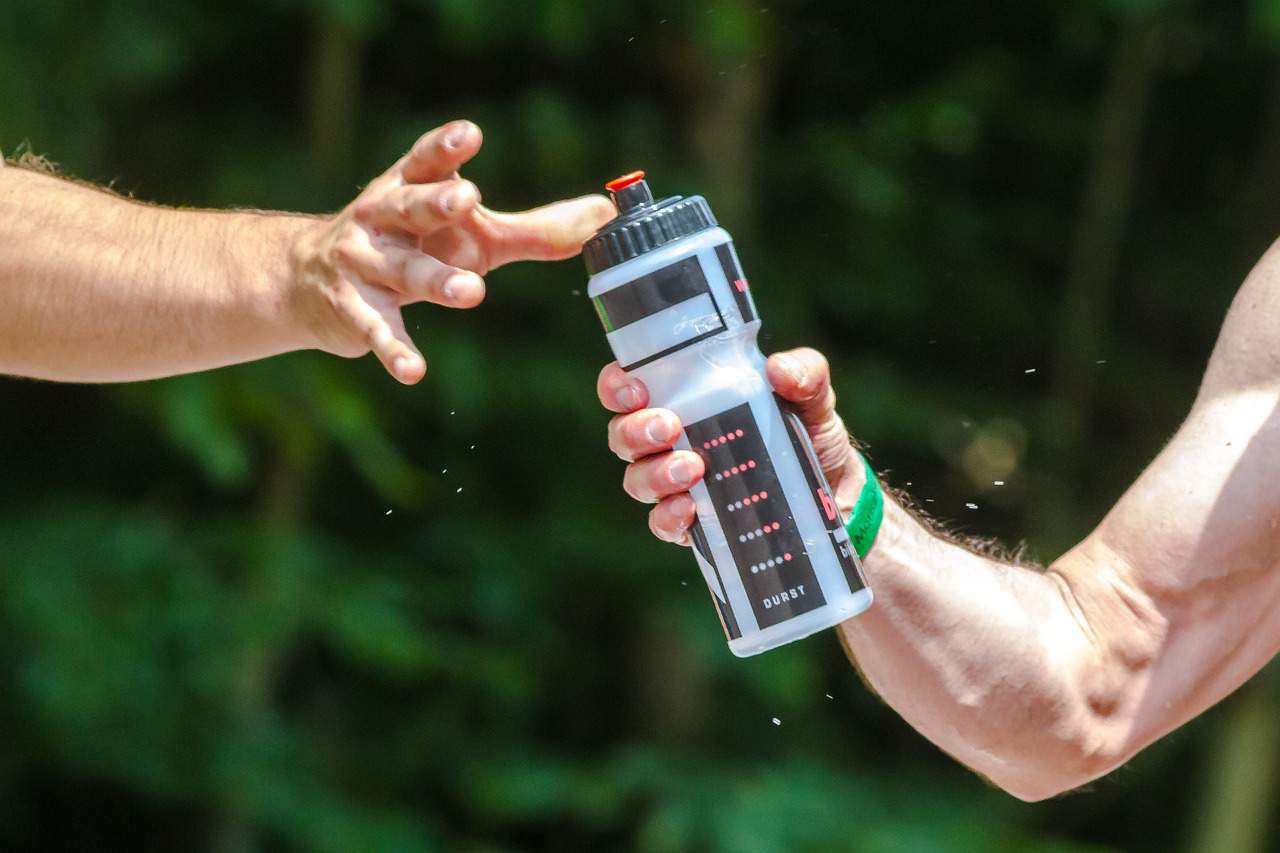
You should try a variety of energy foods and drinks to see which ones work the best for you and which ones you should stay away from at all costs. By testing it out, you will be able to determine how far apart you should space out your doses of energy gels.![]()
![]() A good rule of thumb is taking in about 30 to 60 grams of carbohydrate for every hour you’re running.
A good rule of thumb is taking in about 30 to 60 grams of carbohydrate for every hour you’re running.
You’ll want to go on the lower side of that if you find your nutritional supplements are upsetting your stomach, and you can go on the higher side of the scale if you feel like you’re still struggling for energy.
A good starting point if you’re using GU energy is one packet every 45 minutes or so. So start there and see how it treats you and adjust it accordingly from there.
Don’t forget to determine ahead of time just how much water you should drink during your marathon and come up with a plan on how you’re going to get it. Will you carry your own or will you rely solely on aid stations?
Every 20 minutes or so of your run, you should try to drink at least three ounces of liquid. If that seems like too much when you’re out there running, you can try relying on your thirst to get you through.
If you aren’t using an energy gel or other electrolyte-containing supplement during your run, you should swap out your water at some stops for Gatorade or another sports drink.
Finally, don’t forget about the importance of breakfast on race day—it plays a significant role in keeping your energy up. Make sure to eat about three or four hours before your race if you can.
You’ll want to focus on carbohydrates and shun the fiber. Pancakes with syrup is a good choice. For a run of this length, you’ll also want to add in protein—a bit of peanut butter or a hard-boiled egg can do the trick.
Getting Discouraged
Buck up, little camper. We’ve all had bad runs, and at some point during your training, you’re bound to have one too.
Whether you have a setback from a minor illness, overtraining, or you’re simply having an off day, a single run experience can be enough to doubt whether your training is enough. But it doesn’t have to be.
The next time you have a bad run, remind yourself that it happens to everyone. Don’t stress about it. Just take a day, rest up, and go out on your next run like that last one never happened.
The only miles that count are the ones ahead of you. It’s what you do during future runs that matter; at the end of the day, one bad run last week won’t matter.
If you’re still having doubts, ask some of your runner friends. They likely have epic stories about some of their awful runs.
Going Out Too Fast
When you hear that starting gun and see people blazing past you in the first minute, it can be tempting to try to keep up with them. But whatever you do, resist the urge.
It’s a simple fact of running—there is always going to be someone faster than you at every race. That happens even to elite runners.
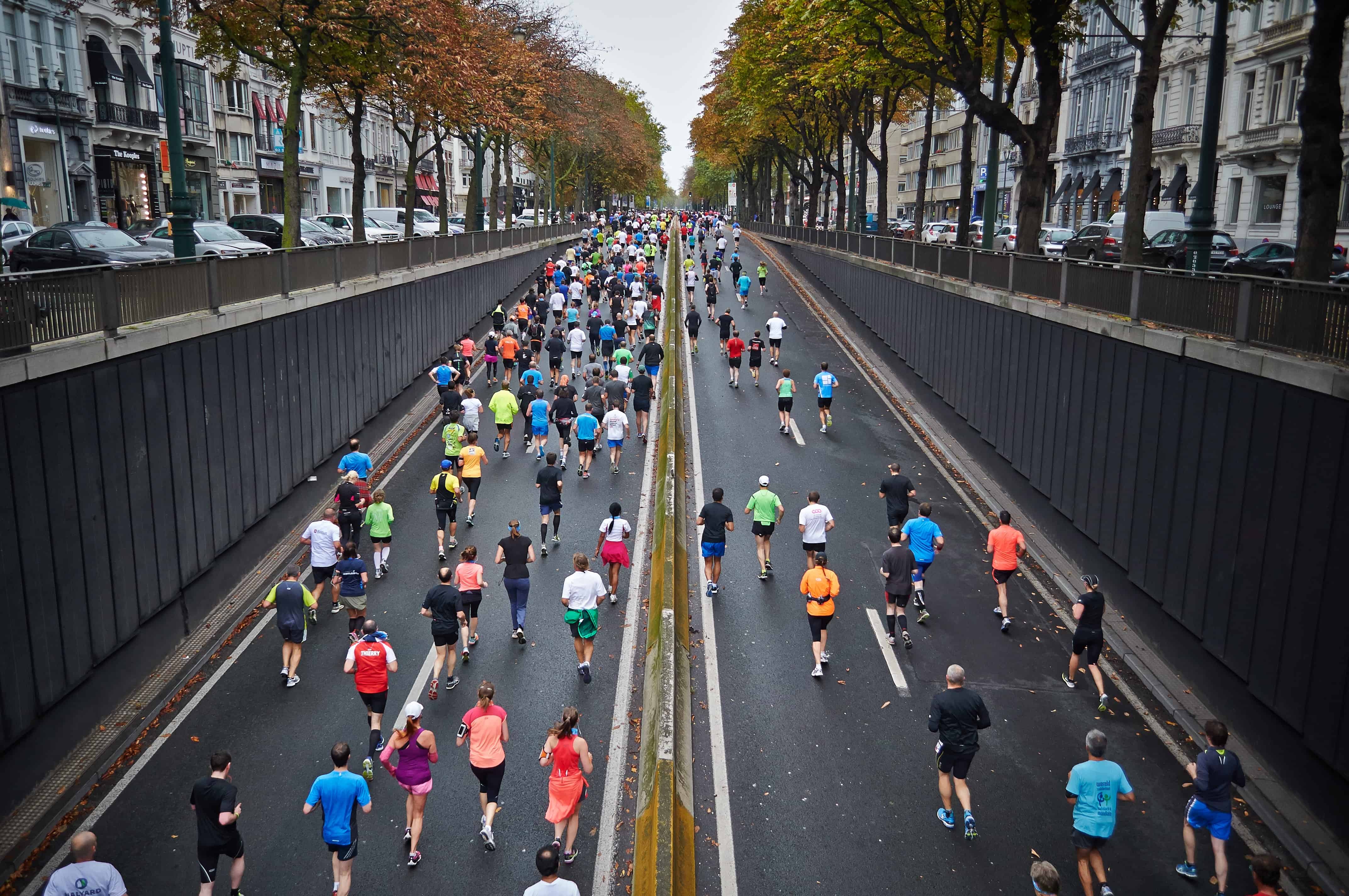
So don’t try to run their race. Run yours.
If you run too fast in the first mile or two because you’re trying to keep up with the other runners, you’re going to sabotage your own finish. If you get too tired early on, you’re going to pay for it, and you may end up walking part of the way.![]()
![]()
Failing to Pick a Mantra
Picking a mantra isn’t a mandatory item on your to-do list for race day, but it has helped a lot of runners, including me. Think of a phrase or a word you find so inspiring that it makes you work harder when you hear it or read it.
For race day, repeat that in your head whenever things start getting tough. Or you can write it on the inside of your lower arm so you can look at it if you feel your spirits sinking.
If you want, you can even buy lace tags like this one from Honey Verse with your mantra on it and attach it to your shoes for the big day.
Ignore the Taper
Once you’ve run close to the mileage you’ll need to go on race day and you’re two to three weeks from the big day, you need to begin to taper.
While there have probably been many days during your training schedule that you would have loved for someone to tell you to cut back on your mileage, now that you’re so close to reaching that elusive 26.2 miles, it can be hard to back off. But it’s in your best interest to do so.
With tapering, you’ll cut back on how many miles you’re running as well as how hard you’re running them. That lets your body rest enough to make sure you’re going to be ready to perform on your race day.
Those days of recovery, while factoring in relatively light running days, are going to ensure you’re at your peak.
But it’s surprisingly not easy for some people. You might feel tired, sluggish, and even grumpy. You might miss that runner’s high.
Running In Shoes That Are Too Small
If you’re running in your normal size of shoes, they’re going to be too little for a marathon. If your real shoe size is 9, you need to go up to at least a 10 for the marathon and the training associated with it.
Your feet are likely to swell up significantly while your doing your long training runs, and it won’t be any better on race day.

Your toenails during training can give you a good indication of whether your shoes are a proper fit. If your toenails are starting to feel painful and are turning colors, it’s time to spring for some bigger shoes
You should always go up a full size or possibly even two while you’re running a marathon. Just remember to break in those new, bigger shoes well before the race begins.
Not Checking Out the Race Course Beforehand
Some runners don’t think that checking out the race course before they head to the starting line is important. But it can be crucial to your plans of how to attack the course and also how to deal with your emotions while you’re running it.
Imagine this: You feel relatively good heading into 20 miles on race day. You’ve been giving it your all and you’re doing better than you’ve ever imagined.
But you know you don’t have much more left in your tank, and you’re already worried about how your energy is starting to decrease and the panic that’s starting to creep in.
Suddenly, you round the corner and you see the most massive hill you’ve ever run right before your eyes. This kind of sight can be enough to discourage even a seasoned runner.
You’d be much better off knowing that that kind of obstacle was going to be on the course. That’s why it pays to drive the race course beforehand. You won’t have any unpleasant surprises at a time when you’re already struggling.
Not Making a Checklist
You’ve been preparing for this day for months, but the morning of the race all you may be able to think about is how you’re going to do. You’re going to be so concerned about performing well that it will be easy to forget some of the things you should bring with you.
Weeks before your race, start making a checklist of items you’ll need to bring with you. There are no items too big and no items too small (we’re talking about you, extra safety pins). It’s always best to never count on the race officials to provide the little things you’ll need.
As race day approaches, you’ll likely remember more things you neglected to put on your list.
Some things you’ll want to include are:
- Your iPod or phone if you like to listen to music while running.
- Energy gels or other nutrition you plan to use.
- Hydration belt or vest if you’re wearing one for your race.
- Identification card with your emergency contact—the race will likely have this information, but it helps to have it readily accessible on your person.
- BodyGlide if you’re using it for chafing.
- Tissues or toilet paper in case the portable bathrooms run out.
- Sunglasses.
- Extra safety pins.
- Your GPS watch.
- Any paperwork or identification you need for pre-race check-in.
- Your bib if you picked up your packet the day before.
- Lip balm.
- Sunscreen.
- Running belt if you need it.
- Foam roller that you can keep in your car for after the race if you need it.
Not Staying for the After Party
Running a marathon is an all-day affair: traveling to your racing destination, getting there early enough to warm up, run the race, and driving home.
Because you’ve had such a long day and your legs are killing you, it can be tempting to grab your water bottle and hit the road soon after you cross the finish line.
But, if you can, you should stay for the after party. Cheer for the other runners as they struggle to cross the finish line. Grab a plate of food so you can speed your body along with its recovery.
You should eat within an hour of the time you cross the finish line. You should shoot for approximately 25 grams of protein and somewhere between 50 to 75 grams of carbohydrates. The protein helps repair your muscle tissue and the carbs will replenish your energy.
You’ve earned this celebration. You should try to enjoy it. Plus, walking around will help your legs feel a bit better the next day.
What Are Some Popular Marathon Training Schedules?
Runners differ widely on how they prefer to train for marathons—from how many weeks they train beforehand to how many days of the week they run. There is no single “best” training schedule because that all depends on the individual and their level of fitness.
But there are several schedules that are safer than some of the others. Beware of any training program that promises to get you ready for a marathon in just four or eight weeks, particularly if you haven’t been running long.
One schedule that may work for you is the 16-week marathon training schedule created by the organizers of the New York City Marathon. It comes at three different levels—beginning, intermediate, and advanced.
But, before you get started, you should learn the terminology you’ll need to decipher the schedule. Here are some of the key things you’ll need to know.
- Flex days: You have a workout scheduled, but you can’t quite muster up the energy or you’d rather replace it with a cross-training workout instead. That’s okay to do when it says flex day on your schedule.
- Regular run: Runs on these days are at a more comfortable pace. You should be able to talk while doing these runs.
- Easy runs: For these runs, you’ll go way slower than you normally would. You might have to constantly remind yourself to go slower as you run. It should be slow enough that you can hold an easy conversation with someone who is running alongside you.
- As you feel (AYF): These runs are done at whatever pace feels good to you. These should be fun, enjoyable runs.
- Fartlek: Non-runners will laugh at this Swedish word if they hear you say it. But, simply put, it means running at various speeds throughout your run. Try to vary it up a bit—hold a faster pace for a while before slowing it back down repeatedly throughout your run.
- Intervals: These are fast repeats that have slow, recovery jogs between the repeats. For the fast repeats, try to keep it to a short distance at a time, between 200 and 1,600 meters.
- Tempo runs: These runs are sometimes between 20 and 30 minutes, and they will be run at a fairly aggressive pace. Think about the pace at which you run 10k races and go a little slower than that.
- Long runs: When you’re planning on running a marathon, you always have to get your long run in. It’ll give you the strength and endurance you’ll need for a race that will test your sanity at times.
- Off: Don’t do anything on these days. No workouts are allowed. Off days are solely for recovery, which is an important part of training.
Now that you have the terminology down, let’s look at a conservative chart. This will be for beginning runners, but you should at least be able to run three miles at a time comfortably three or four times a week before you start this program.
More experienced runners who are used to putting in more mileage and running more days a week might like the moderate 16-week plan better. It includes the same types of runs, but it gives fewer days off.
Finally, the most experienced, high-volume runners may like the advanced 16-week marathon training plan. But be warned, there are few days of rest in this demanding schedule. This might be a tricky one for people with full-time jobs, families, and a lot of other responsibilities to juggle.
Marathon FAQ
Before you sign up for your first marathon, here are some frequently asked questions that may help you decide whether this is good decision for you and what an appropriate timeline might be.
Can a Beginning Runner Tackle a Marathon?
While a beginner can run a marathon, it takes a lot of time to build up safely to that level. As a beginner, it can be difficult to go from running no miles a week to building up to 26.2 miles.
You run the risk of overtraining and possibly injuring yourself. Knowing when they’re doing too much can be a difficult thing for a beginner to assess.
If you’re completely new to running, try signing up for a 5k race first. Even if you’ve never run a full mile, you can be adequately trained for that 3.1 miles by the end of 4 to 8 weeks. Run that race and see how it goes.
From there, you can consider running a marathon. But be aware, it will still take a lot of time to build yourself up to that mileage. It would be a safer bet to take some baby steps to reach your goals.
After you have a 5k under your belt, consider training for a 10k. Once you’re able to do that distance, you’ll have a solid running base that would make it easier for you to do a marathon. And, because your body will be used to running at that point, you’ll have a lower chance of injury.
Don’t People Die During Marathons?
Every year, there are some people who die while competing in marathons or shortly after they’ve finished them. There’s no way around it—marathons are grueling physical challenges.
If they were easy, they wouldn’t be quite as appealing
Although it can be scary to see the headlines after each marathon-related death, it’s important to remember that the vast majority of runners finish their race and live to tell about it. These marathon-related deaths are extremely rare, considering how many people participate in marathons these days.
The simple act of getting out there on a nearly daily basis and doing regular exercise while training for a marathon likely prevents a lot of deaths each year.
Sitting on a couch every day because you’re too scared of dying during a race is way worse for your health than tackling a marathon.
But, if you’re truly scared of dying as you approach the finish line, perhaps you’d be better off running a half marathon instead. Half marathons have a lower risk of death and are still a great physical challenge
A race of any length is better for you physically than not exercising at all!
Is Running This Distance Bad for My Knees?
If there is one running myth many runners get tired of responding to, it’s likely this one. Most runners have had well-meaning friends, co-workers, or family members tell them that they’re hurting their knees by running, particularly when they participate in long-distance runs.
But the fact of the matter is that running isn’t bad for your knees at all. Running incorrectly and training improperly might be bad for your knees, but running itself can actually be good for your knees. That’s because it helps add bone density and toughens up the muscles in the surrounding area.
What Should I Wear the Day of My Marathon?
This is a legitimate question and one that a lot of people wonder about, having heard the horror stories about bloody nipples and giant-sized blisters. Who can blame people about being a little nervous about both those things?
The key is to worry less about what looks fashionable and go more with comfort. Don’t break out new clothes or shoes the day you’re running in a marathon. Everything on your body should have already been worn and tested on a run.
![]() This includes your running socks, shoes, shorts, shirts, and even underwear. And, ladies, this isn’t the time to try out a new sports bra either.
This includes your running socks, shoes, shorts, shirts, and even underwear. And, ladies, this isn’t the time to try out a new sports bra either.
Avoid cotton clothing on race day at all costs—and you should also keep away from it on training days too, especially your long run day.

Synthetic materials for clothing is what you’re looking for. They are more breathable, which can help your body cool down as you run. They also absorb the moisture off your body and dry quickly, which will keep you more comfortable and cut back on your chances of chafing.
Pay attention to your eyewear as well. Your sunglasses should have UV protection.
Why Do I Hear So Much About Runners Pooping During Races?
No adult wants to run the risk of messing their pants at any point. But to do it publicly while surrounded by people who are specifically standing there at a finish line just to watch you cross it is doubly mortifying.
The bottom line is this—nobody welcomes the trots while they’re trotting. But, realistically, it is a real risk you have as a runner. Gastrointestinal distress can crop up at any point during a race.
Luckily there are ways to cut down on the chances you’ll have an embarrassing finish. Cut back on the fat and fiber you eat in the day or two before the race.
You should also pay attention to your triggers—if you know a food affects you a certain way, stay away from it in the days leading up to your race. This is particularly true when it comes to caffeine, which can be a trigger for many people.
You can also try to poop the morning of your race before you’re at the start line. Coffee or any warm liquid can help encourage a bowel movement.
When you running, only use energy gels or sports drinks you’ve used successfully before in the past, and make sure you aren’t using them too frequently because that can be a sure-fire recipe for gastrointestinal issues.
And you might want to map out ahead of time where the portable toilets are along the race course in case you get into trouble.
Should I Train By Myself or With Someone?
This is a really common question and there is no right or wrong answer. You should go with whatever you find most enjoyable and motivating. Maybe you’ll want to settle for a combination—do some runs with a friend or group and make other runs a solo effort
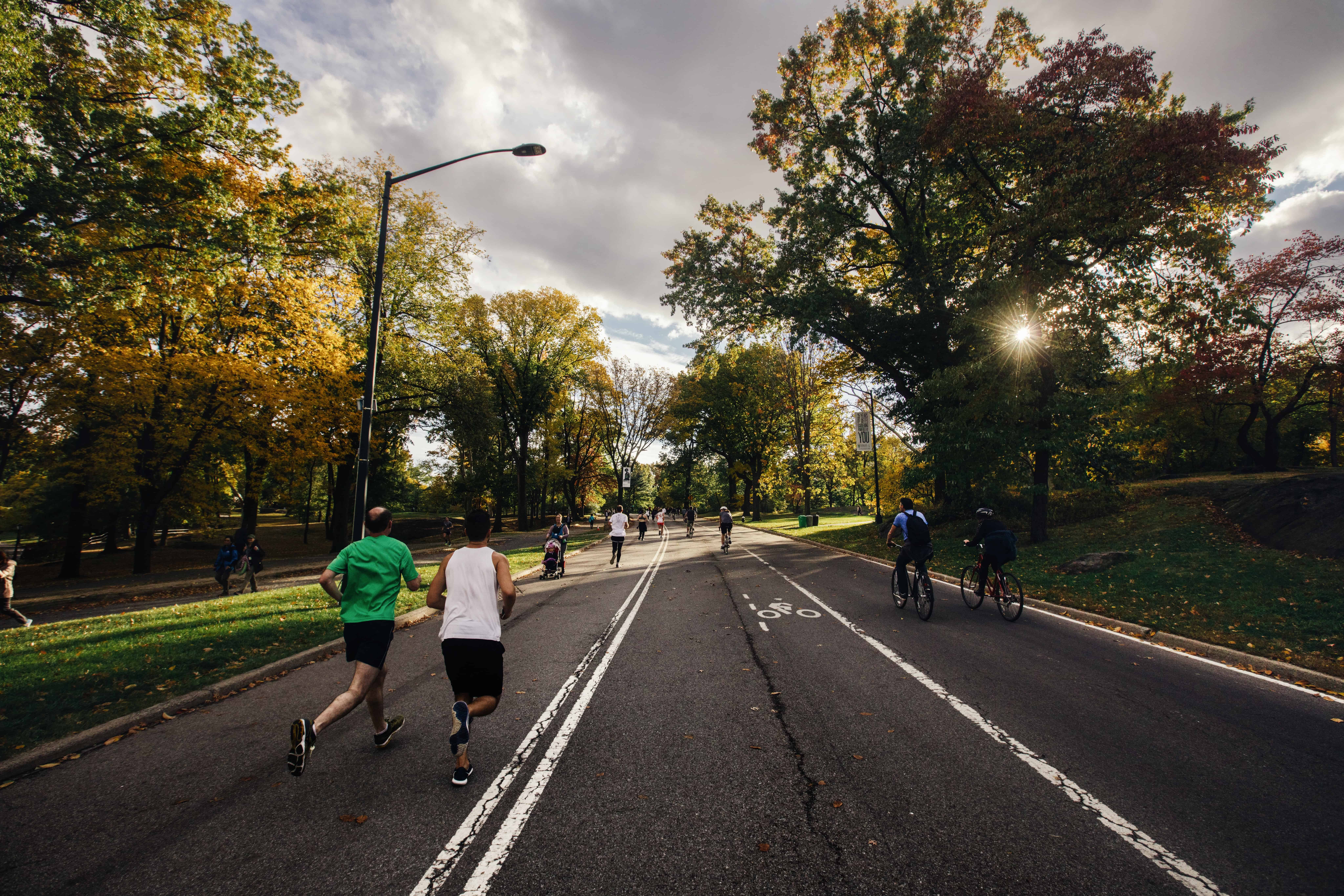
Some runners think of their training time as the time where they can let their mind wander or they can play music and drown out the world. If it’s your special time to decompress, tell any people who ask to run with you that you like solo runs best. They’ll get it.
If you don’t mind the company though, you can learn a lot from a fellow runner. They might give you advice about your form that ups your run to a whole new level. Or you might make a new best friend, both on the road and off the road.
Some runners find the competition motivating when running with another person. Whatever you do, make sure you find someone who doesn’t mind running at your pace or close to it.
If you find yourself trying to run too fast to keep up with them, they aren’t a good match for your training routine. You need to run a marathon at your pace, not somebody else’s.
Will My Training Runs Have to Be a Full Marathon?
You want to run a marathon, but that doesn’t mean you relish the idea of running it repeatedly as you train for the big day.
Most people new to running assume their long training runs will have to reach 26.2 miles. If you want and you feel fine, you can go this far in your training runs, but you certainly don’t have to.
While it might help you feel more prepared, it could also lead to a training injury. And, you’d hate to have to bow out of the race because you wanted to sneak that extra couple miles in a training run when you were already prepared without them.
What Should My Goal Be For My First Marathon?
Runners are typically goal oriented. We’re always looking forward, both while we’re out on a run and when we’re pursuing our goals. We tend to be driven toward our pursuit of self improvement and that’s a great thing.
But sometimes we can put too much pressure on ourselves.
So while it’s fine to have a particular pace time in mind for your first marathon, it’s a better goal just to focus on finishing it.
The danger with setting a goal is that you won’t be happy unless you hit it. And sometimes hitting it really is out of your control. There are a lot of factors that could slow you down on race day, such as wind, rain, high heat, and more.
If you’re so focused on hitting a particular number every mile, you’re going to find you might end up too burned out to finish the race, especially if your pace goal is too aggressive.
First marathons can be a wonderful learning experience and a great accomplishment you’ll remember for the rest of your life. No matter what your pace is, no one can take that away from you.
Instead of thinking about what the guy next to you is doing during your race, concentrate on yourself and running the mile you’re currently in.
While it’s always nice to pass other runners, every step you take is going to be a personal best for you as you run your first marathon
If you aren’t pleased with your overall time after your marathon is over, you can use your first as your benchmark to set a goal for your second marathon. For that one, you’ll know what you’re capable of and what worked and didn’t work for you as you trained.
What Happens If The Weather Is Bad On Race Day?
Having your big day dashed by Mother Nature can be a major disappointment. If you hate running in high winds and rain and you wake up to monsoon-like conditions on the day of your marathon, it can be crushing. It’s enough to psych you out before you’ve even begun.
Just remember, you’ve likely trained in all kinds of conditions as you prepared for your marathon. It probably won’t be pleasant, but you can get through it. If you were looking for a pleasant experience, you likely wouldn’t have selected a marathon in the first place.
Why Do I Hear So Much About Cross Training?
The reason you hear so many runners talk about cross training is because it really elevates their performance to the next level. If you take a seasoned runner who doesn’t cross train and who added two cross training sessions a week to their routine, you’d have an improved athlete who is less prone to injury.
Cross training can improve a runner’s power and efficiency.
Some of the best exercises to add into your running routine include:
- Cycling
- Swimming
- Elliptical machine
- Nordic skiing
The reason you become less prone to injury is because cross training works and strengthens muscles that running doesn’t. That can help you avoid the imbalance of muscles that can lead to some injuries.
If you’ve had a running injury before, you’ll know that cross training is crucial to the rehabilitation process. You can stay fit even when you aren’t allowed to run just by doing your cross training.
Plus, as much as we all love running, sometimes it just feels good to do a different type of workout. It can be as good for your mind as it is for your body.
How Do I Pick Which Marathon I Should Run?
No matter where you live, you’ll have lots of options for great marathons near you. But there are some factors you’ll want to consider.
- Location: Do you want to travel or stay near home?
- How big of a race you want: Some people love big races while other fear the traffic and crowds. Smaller races are more affordable, but bigger races have better freebies and after parties.
- What time of the year you want to run: Running a marathon in the heat is challenging. But even if you run one in the fall, you’ll have to do some of your training in the summer heat.
- The course: If you hate hills, you’ll want to find a flat marathon to sign up for.
Should I Feel Like a Failure If I Walk Part of It?
A surprising number of runners seem to think they haven’t legitimately run a marathon if they walk part of it. That’s simply not true!
No matter how long it takes you to reach the finish line, you’ve accomplished an amazing feat that most people will never do. Even if you walk part of the way, the distance you’ve covered is still the same.
Wrap up
No matter if it’s your first marathon or your 50th – we hope that this guide to marathon training has been helpful in getting you a little more prepared for the task ahead.
If you’re not sure which marathon you want to run, click here to see our lists of the best marathons in the USA.

